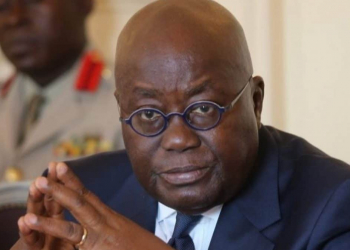Cost of borrowing is expected to go up in the coming months as some commercial banks are planning to adjust their lending rates upwards by about three per cent, Business Finder has leant.
The banks, this paper gathered are worried about the rising inflation and the expected increase in Treasury bill rates.
A bank executive told this paper that the monetary policy rate of the Bank of Ghana (BoG) was expected to go up probably at the next sitting of the Monetary Policy Committee (MPC) because inflation keeps soaring
Inflation went up by 300 basis points in September 2016 to reach 17.2 per cent. The months of October, November and December historically are noted to be periods in which inflation remains very high and the trend is highly unlikely to change because of the general elections and the Christmas festivities.
The BoG’s central target band for inflation is 8±2 per cent by the first half of 2017 but the recent development in the Ghanaian economy might compel the Monetary Policy Committee to tweak the inflation targeting framework.
The bank executive told this paper that the MPC will for the next one year keep the policy rate high at more than 26 percent because of the uncertainty in the Ghanaian economy.
He added that whoever wins the December 2016 elections will have a lot of work to do because the Ghanaian economy has been battered by some instability.
Presently, the average lending rate in the banking industry is about 32.4 percent. However, more than 17 banks charge interest rates over and above the average lending rate. About 10 of them also lend above 40 percent per annum.
Meanwhile, with barely two months more to end the year, some banks have suspended lending to new clients.
Due to marked increases in their non-performing loans (NPLs) asset ratio, some banks have decided to halt lending to new clients, giving only to existing and selected clients who are considered credit worthy.
Almost about half of banks operating in Ghana registered NPLs of more than the banking industry average of 16 per cent.
At the last MPC in July, the Central Bank had said that the risks to inflation and balanced growth had triggered the unchanged policy rate.
Standard Chartered Bank and GT Bank have slowed down lending considerably, particularly to businesses because of their high NPLs in the first half of this year. Stanchart registered the highest default loan of 51.73 percent in June 2016 as against 26.3 percent in June 2015 while GT Bank also registered a high NPL of 29.98 percent as against 8.71 percent in June 2015. It is unclear whether the NPLS will go up further as the banks are set to release their third quarter financial reports anytime soon
According to the BoG, banks loan quality generally deteriorated in the first quarter of 2016. NPLs increased by 59.9 per cent from GH¢ 3.1 billion in March 2015 to GH¢ 4.9 billion in March 2016. This translated into an NPL ratio of 16.2 percent, up from 11.4 percent in March 2015.
The worsened NPL ratio was attributed to a number of factors, including the general slowdown in the economy, increasing cost of production due to high utility tariffs and reclassification of the loan portfolio of banks. Adjusting for the fully provisioned loan loss category, however, the NPL ratio reduced to 8.3 percent in March 2016, compared with 5.5 percent in March 2015.
Join GhanaStar.com to receive daily email alerts of breaking news in Ghana. GhanaStar.com is your source for all Ghana News. Get the latest Ghana news, breaking news, sports, politics, entertainment and more about Ghana, Africa and beyond.


